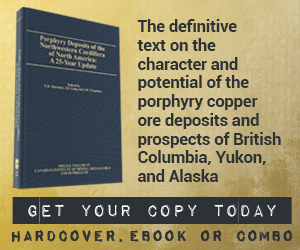Library Magazine Articles Due diligence prior to prospectus filings
Due diligence prior to prospectus filings
Deborah McCombe - Feb 2007
Original Title: Getting it right the first time - due diligence prior to prospectus filings
Several months ago at a meeting of the Canadian Securities Administrators (CSA) and CIM, we discussed the concept of a regular column on disclosure standards. There is a myriad of rules, policies, and good practices that the management of companies, geoscientists, engineers, and many others associated with the mining company must have at least a basic knowledge of. This first article discusses due diligence and prospectus filings.
In 2006, there was a significant increase in mining industry financing activity and worldwide exploration expenditures. It has been our observation that the majority of financings reviewed by the securities commissions are related to mine feasibility studies, mine construction, and mine expansion, and these financings are in the tens of millions of dollars and commonly exceed $100 million. So are companies providing sufficient and consistent disclosure to ensure investors are getting the information they need to invest in these mining projects?
These are some of the factors that companies’ officers and directors, qualified persons, underwriters, and lawyers should consider when reviewing a company’s scientific and technical disclosure prior to filing a short form prospectus.
Technical Reports
Is there a technical report on each material mineral property? Are these reports current? Do these reports comply with National Instrument 43-101 (NI 43-101) and follow Form 43-101F1?
Some of the typical non-compliance issues that we find during our review are:
- disclaimers that disclaim responsibility for a portion of the report;
- incomplete certificates;
- unsigned certificates, consents, and technical reports;
- lack of a proposed program and budget; and
- lack of cautionary language required by the instrument (i.e. cautionary language that must accompany the disclosure of a preliminary assessment).
Prospectus
Is there any material difference between disclosure in the technical report and the prospectus? Are the “Use of Proceeds” in the prospectus consistent with recommendations in the technical report, or supported by proposed or capital budgets in technical reports? Has the scientific and technical disclosure been prepared by a qualified person and does it comply with NI 43-101?
Continuous Disclosure
Is the company’s disclosure consistent with no material differences? Is the disclosure reasonable and consistent with mining industry standards such as CIM Best Practices?
The Short Form prospectus incorporates the most recent Annual Information Form (AIF) by reference, and the required content of the AIF should be a summary of the information in the technical report. There should be no material difference in the disclosure. When OSC technical staff carries out a continuous disclosure review, we read the company’s material change reports, AIF, and Management’s Discussion and Analysis, which are incorporated by reference into the prospectus. We also look at news releases not incorporated by reference and the company’s website. There should be no material differences in content between the prospectus disclosure and what the company is telling investors in other documents.
Finally, we do an assessment of general compliance with industry standards. This could include assumptions used in the cut-off grade for mineral resources or reserves, the mining and processing costs, the assumed time to develop a mine and achieve commercial production, the amount of assumed dilution by a certain mining method, or the percentage of metallurgical recovery by a proposed processing method.
Consideration of these due diligence questions should assist in the identification of any shortfalls or inconsistencies in a company’s disclosure.
Many thanks to Greg Gosson, AMEC, for his input in this article.
About the Author:
Deborah McCombe is chief mining consultant of the Ontario Securities Commission.
- BACK TO LIST
- PREVIOUS ARTICLE
- NEXT ARTICLE

.png)
